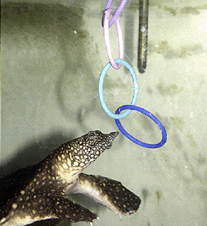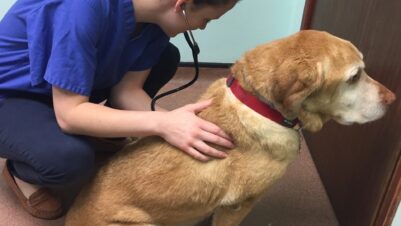Pets are prone to environmental stress, and the unfamiliar sights, sounds and smells of a veterinary practice can turn even a routine visit into a major trigger (Edwards et al., 2019a). Many dogs and cats display signs of fear, anxiety and stress during veterinary visits – something you’ve likely witnessed first-hand in your practice.
The impact is far-reaching. For the pet, it poses a significant welfare issue, triggering negative physiological and behavioural responses, which can impede recovery. For clinic teams, it makes handling more difficult, increases injury risk and impacts emotional well-being. Pet owners may delay or avoid routine visits, jeopardising early diagnosis and treatment.
Minimising pet stress in practice is therefore essential – not optional – for improving the well-being of vet and pet, the working environment and client compliance. This article explores ways to create a better practice environment – from layout and lighting to kennelling – and how innovative practice designs are reshaping the future of veterinary care.
Fight or flight
With an estimated 10.6 million pet dogs and 10.8 million pet cats in the UK (PDSA, 2024), it is no surprise that 95 percent of pet owners consider their pet(s) part of their family. Yet research increasingly shows that veterinary visits can be a significant source of stress for our four-legged companions. Studies suggest 73 percent of cats display stress in the waiting room, rising to 85 percent during examinations (PDSA, 2022). Dogs face a similar ordeal, with a study observing fearful behaviour in more than half of dogs during examination (41 percent showed “mild to moderate” fear and 14 percent exhibited “severe or extreme” fear) (Edwards et al., 2019b).
High stress levels can cause a multitude of adverse physiological consequences, affecting pets’ natural behaviours. Their “fight or flight” response kicks in, raising heart rates and cortisol levels, which can compromise immune function and general health and recovery.
Almost three-fifths of cat owners say the stress associated with vet visits is a reason for going less frequently
The desire to avoid this stress is a major reason for owners to delay bringing their pets to the vets (Lloyd, 2017). Research has found that 65 percent of dog owners found vet visits difficult because of their pet’s anxiety, with 30 percent actively avoiding a visit because of it. Almost three-fifths of cat owners say the stress associated with vet visits is a reason for going less frequently (Dawson et al., 2018).
Fearful animals tend to be less cooperative, requiring more time and staff support, which affects team efficiency, productivity and morale. There’s also the risk of misinterpreting physiological changes (panting, salivation and lip licking are also signs of nausea or neurological conditions), meaning an animal may be overtreated or undertreated, potentially impacting recovery (Feilberg et al., 2021).
How to create a better veterinary practice environment
In veterinary settings, layout and environment remain key barriers to welfare. The physical environment contains multiple stressors, and a poorly designed facility can exact a daily toll on animals and staff (University of Wisconsin Shelter Medicine Program, 2023). Just as consumer brands map customer journeys across physical and digital channels, veterinary practices must consider every patient’s (and client’s) touchpoints – these are what shape perception, build trust and drive loyalty. Veterinary design should no longer just be about clinical efficiency – it has to be animal-centric by design to meet client expectations and reflect the strong bond between people and their pets.
Just as consumer brands map customer journeys across physical and digital channels, veterinary practices must consider every patient’s (and client’s) touchpoints
The World Small Animal Veterinary Association (WSAVA) cites the need for environments that support species’ physical and behavioural needs, addressing noise levels, kennelling and lighting within its recommendations. Practices must consider the full patient journey, starting from the moment a pet’s paws step through the door. Waiting areas should feature species-specific zones (Edwards et al., 2019), with visual barriers and elevated perches for feline patients.
Streamlining services and choosing transparency
Forward-thinking practices are reimagining traditional layouts to streamline workflows and reduce stress points. While not yet industry-wide practice, the trend is growing, particularly among Fear Free-oriented practices. Fen Vet in Canada has eliminated waiting rooms entirely by sending clients straight to exam rooms; UK-based Harrison Family Vets has replaced reception desks with a mobile front-of-house team and private waiting pods (Figure 1), while US veterinary start-up Modern Animal uses a dedicated app for all client communications to reduce front desk noise.
A clear, uncluttered layout can minimise congestion in high-traffic areas and streamline patient flow
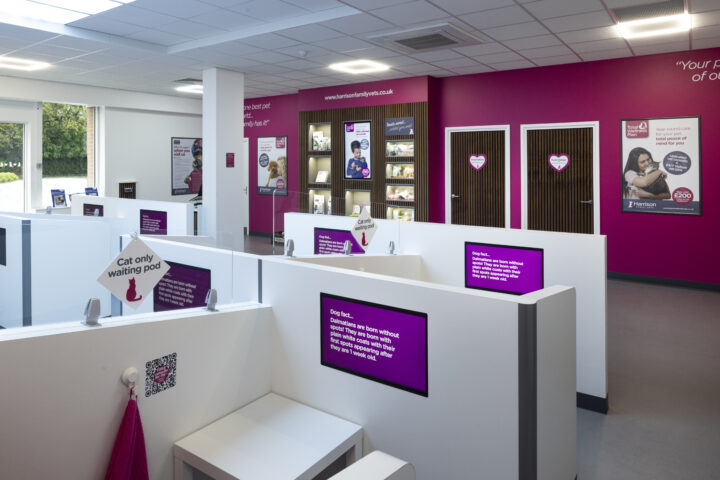
A clear, uncluttered layout can minimise congestion in high-traffic areas and streamline patient flow. Efficient storage maximises space and gives staff quiet, easy access to supplies without disrupting patients.
Increasingly, practices are prioritising transparency, with open layouts and glass partitions. This progressive approach offers numerous advantages – improving client trust and satisfaction by enabling owners to observe different areas of the clinic and the care being provided. Modern Animal’s West Hollywood clinic allows clients to see “from one end to the other” (Figure 2), which Chief Medical Officer Dr Christie Long says has the added benefit of promoting staff expertise. Transparency also allows for improved patient monitoring and added visual appeal.
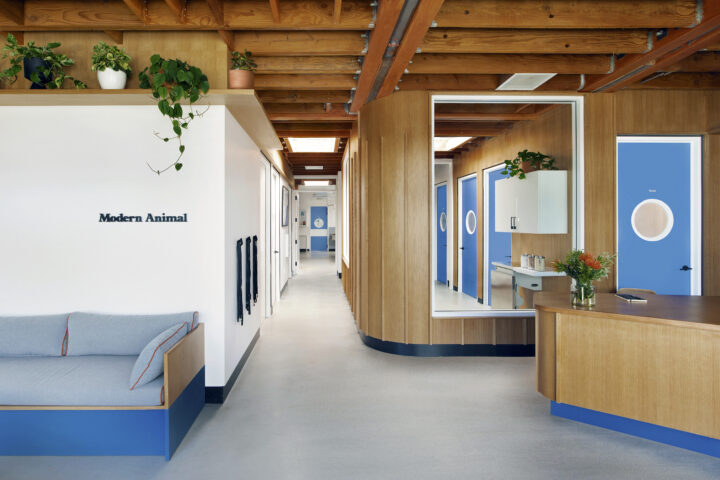
Tackling noise pollution
As well as reshaping client experience and operational flow, the transparency trend also underscores the need for kennelling environments that support both animal well-being and visibility – with research identifying kennels as areas of high stress (Figure 3) (Lloyd, 2017).
In a CASCO Pet survey of UK and US veterinary professionals, 72 percent reported witnessing animal stress in veterinary kennels frequently or very frequently (daily), with only 8 percent of respondents saying it was rarely or never witnessed. The top three stressors for staff were noise from animals, handling anxious pets and noise levels from kennel materials/design.
Noise pollution can cause stress and affect the welfare of both pets and employees. Kennel noise – largely from excessive barking – routinely measures above 100dBA (Zurlinden et al., 2022). Well-designed kennelling is therefore essential to improving well-being and the working environment.
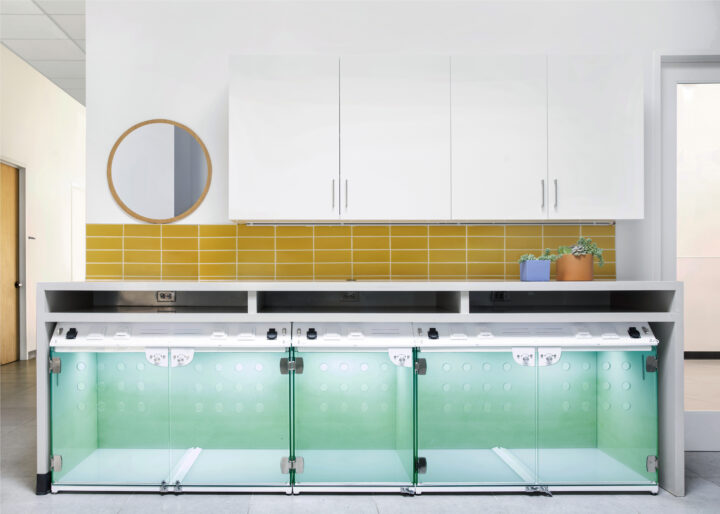
Glass has been shown to significantly decrease audible stimuli (Edwards et al., 2019a), lowering patient stress levels and improving clinical care. Glass also enhances patient visibility, enables more efficient monitoring and boosts biosecurity, compared to alternatives (International Society of Feline Medicine, 2024) – as well as offering better insulation and heating control, with customisable zoned heating and cooling areas aiding recovery.
Fen Vet uses CASCO Pet WELLKennels in its practices. Owner and vet, Cody Freeman, notes they “provide quiet, secure spaces for pets to heal”, adding: “Well-rested pets lead to better recovery outcomes and easier management for the team.” James Harris, Harrison Family Vets group clinical director, has described WELLKennels as playing “a fundamental part in the Fear Free approach to patient hospitalisation and recovery”.
Adapting light levels
There is also a growing emphasis on natural lighting in veterinary spaces to support circadian rhythms, with studies showing its benefits to mood, recovery and patient/staff stress levels. Where natural light cannot be incorporated, softer LED lighting is preferred over harsh fluorescent overheads, which can flicker and buzz, undermining pet well-being and recovery. In kennels, programmable LED lighting that can be tailored to the patient promotes rest and recovery, benefitting care and workflow (Figure 4).
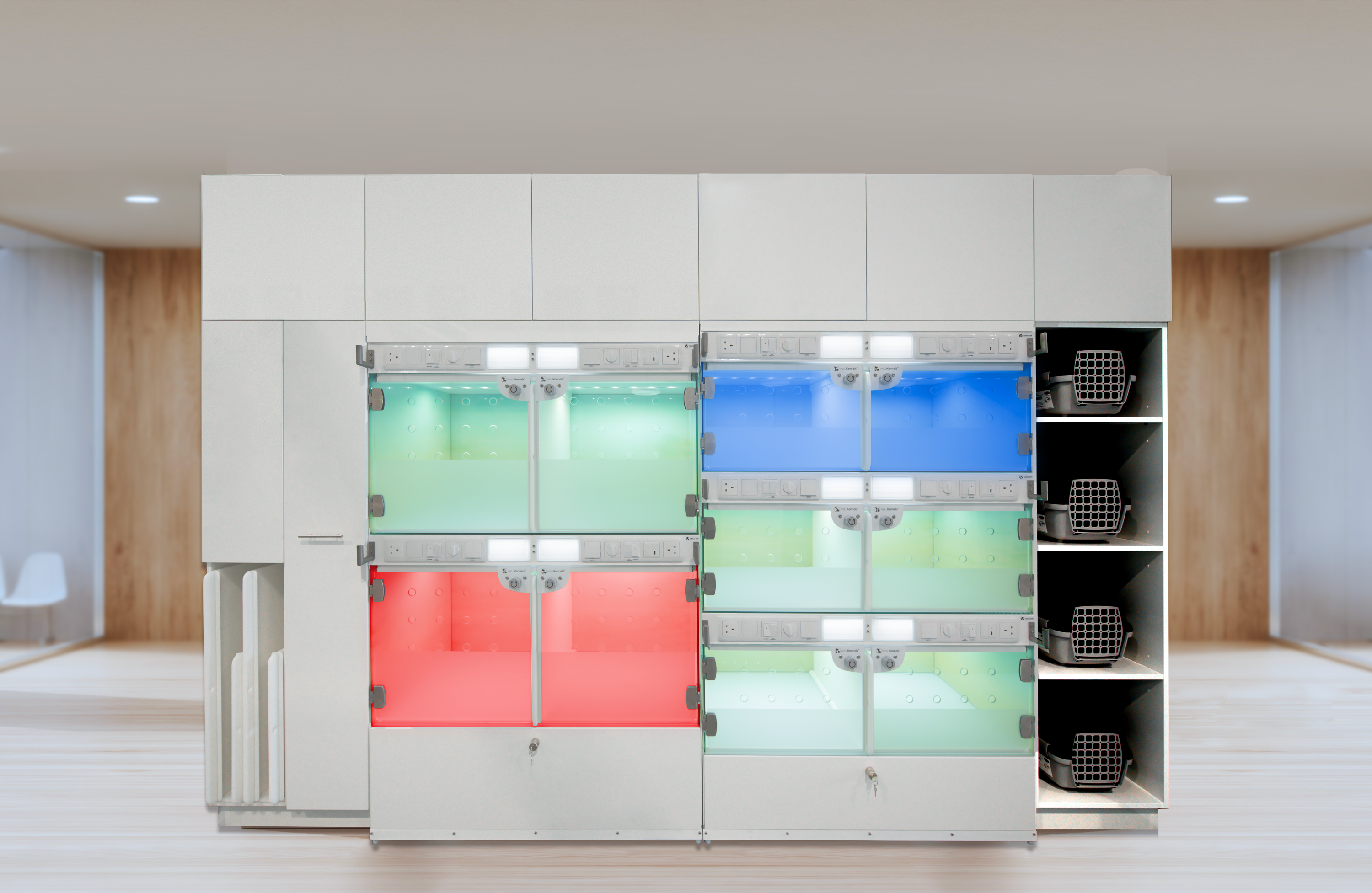
Conclusion
While pet stress at the vets cannot be eliminated, evidence-based and forward-thinking clinic design – including layouts, lighting and kennelling – can substantially reduce key environmental triggers, benefitting patients and employees.
As we understand more about the interplay between environment and animal stress, practices must embrace the opportunity to innovate and redefine standards for patient care and professional well-being. This begs the question about how future designs could unlock greater potential for reducing patient anxiety to create a calmer experience. Could this then be the key to giving pet owners the confidence to schedule more frequent visits?








